Making a Night Glowing Ground
Yesterday I finally decided an approximately colour scheme for my Kolony Militia troops, from pig iron. I wanted to use them as the lawful evil power in a postapocalyptic world: much more well-equipped than the scavenger, but not as elite as the Rambo-style mercs.
Something like the armored troops in Jin Roh.
The point was: a really dark colour scheme implies some kind of contrast in the base, unless you want a black miniature on the tabletop.
For it wasn’t my plan, I was thinking about a desert ground, or a colourful mechanical mess.
Then i had an idea: why don’t I just keep with the dark base, but with some really visible points of light? Something like glow sticks?
I’ve never tried OSL before, but i found a really simple article, which is great to start. It is nothing brilliant, just a good suggestion on the way for making a good halo.
Anyway: I started with a square piece of Eulithe (look at this article for a short review!). I used a scrap piece, and the size was 4×4 cm, so i didn’t want to change it.
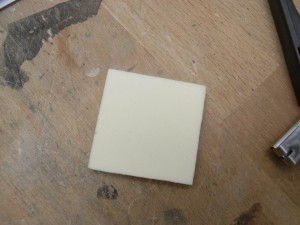
With a metal brush I texturized the surface. I wanted to give a “concrete” look, with more accuracy than the MDF technique. Actually the Eulithe is much more spongy than I expected, but still the look was good.
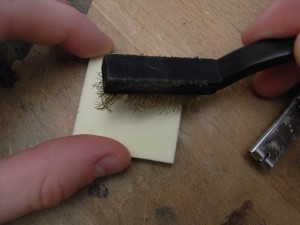
Then with a generic carving tool i made some cracks on the surface. It was like carving a piece of cake. A really soft one.
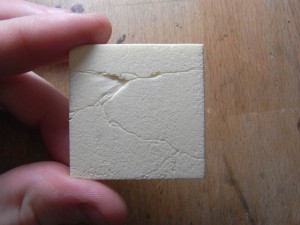
In the while I prepared some glow sticks: those are simple pieces of styrene rods, 5mm long
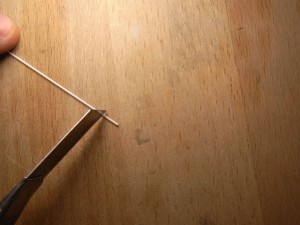
Then primered with black acrylic.
Note: Eulithe hasn’t problems with sprays chemical stuff, so you can also use a standard primer instead of the tedious brushwork!
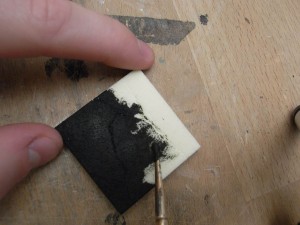
Then the spongework!
Starting with a Shadow grey layer, really thin, then an even thinner one with a bit of bleached bone.
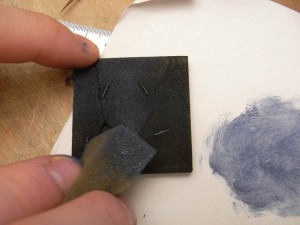
It works quite good, but the final look is really nighty! It looks perfect for a diorama, but unless you want to make a whole tabletop with that tonality, you should add more light on the ground.
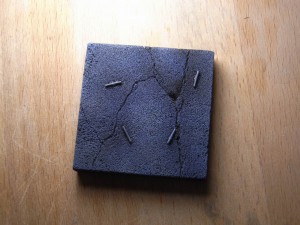
Anyway, that’s the way I did it, and so I continued, starting with the glow sticks!
Starting with dark angel green, then to snot green, then to scorpion with a tip of bleached bone. As explained in the above article. (look on the top of the page, there’s the link, i’m not stealing anything!)
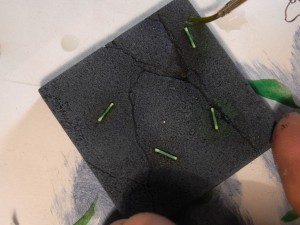
Finally, I started with the ground OSL. I was afraid it was really hard to do, but actually it was pretty simple. Just some passages, with really thinned colour. Fast and effective, top quality!
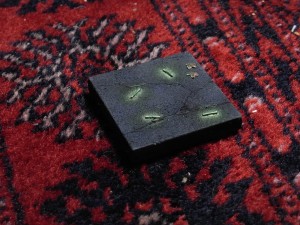
Conclusions:
I think that for the bases i will go with a lighter ground tone, and maybe i will use some plaster instead of eulithe for the concrete look. Overall, i’m really happy of the painting result, and i will make more experiments with the OSL in the future!
Cheers,I think that for the bases i will go with a lighter ground tone, and maybe i will use some plaster instead of eulithe for the concrete look. Overall, i’m really happy of the painting result, and i will make more experiments with the OSL in the future!
No comments:
Post a Comment